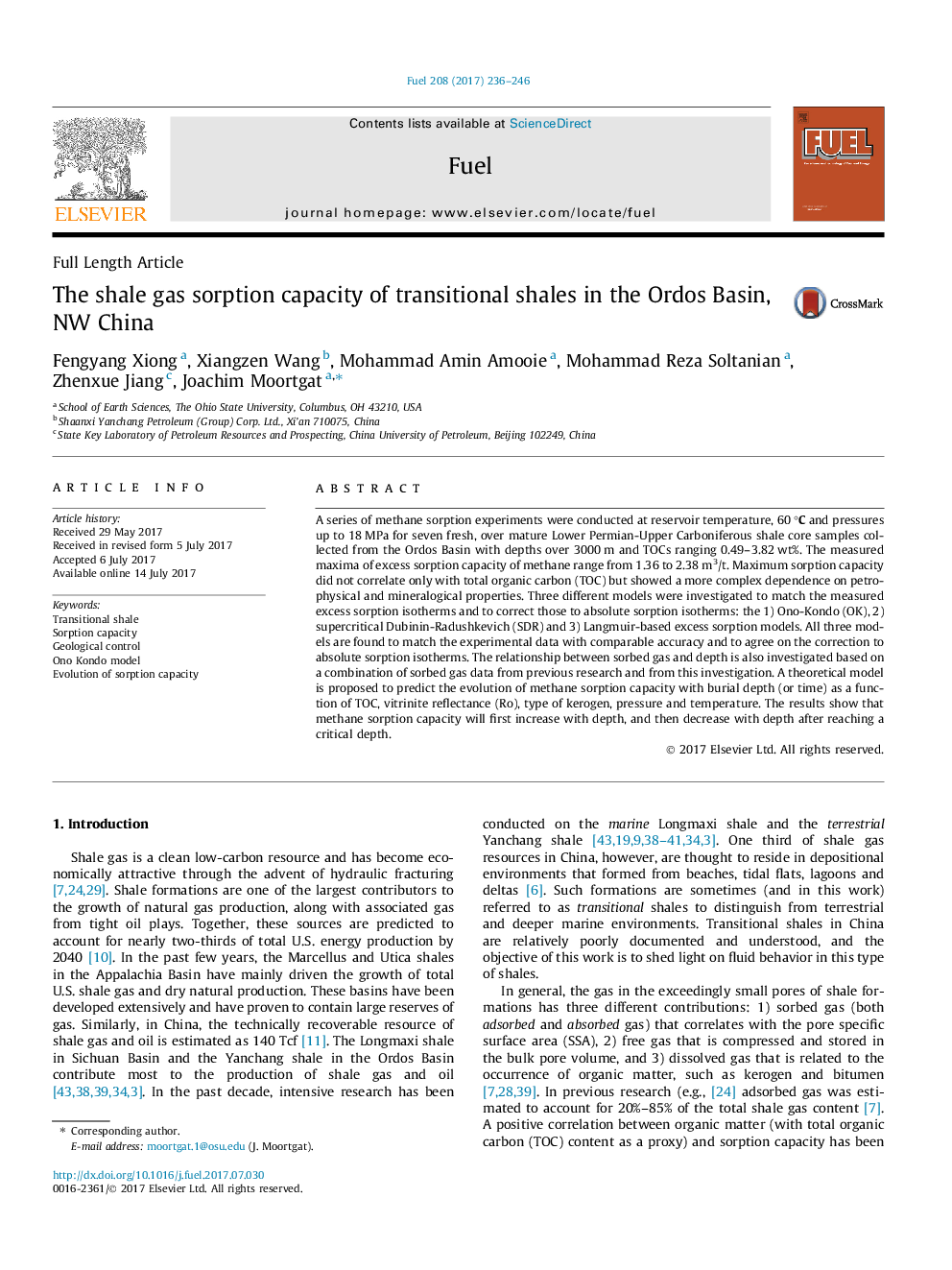| Article ID | Journal | Published Year | Pages | File Type |
|---|---|---|---|---|
| 6474090 | Fuel | 2017 | 11 Pages |
A series of methane sorption experiments were conducted at reservoir temperature, 60 °C and pressures up to 18 MPa for seven fresh, over mature Lower Permian-Upper Carboniferous shale core samples collected from the Ordos Basin with depths over 3000 m and TOCs ranging 0.49-3.82 wt%. The measured maxima of excess sorption capacity of methane range from 1.36 to 2.38 m3/t. Maximum sorption capacity did not correlate only with total organic carbon (TOC) but showed a more complex dependence on petrophysical and mineralogical properties. Three different models were investigated to match the measured excess sorption isotherms and to correct those to absolute sorption isotherms: the 1) Ono-Kondo (OK), 2) supercritical Dubinin-Radushkevich (SDR) and 3) Langmuir-based excess sorption models. All three models are found to match the experimental data with comparable accuracy and to agree on the correction to absolute sorption isotherms. The relationship between sorbed gas and depth is also investigated based on a combination of sorbed gas data from previous research and from this investigation. A theoretical model is proposed to predict the evolution of methane sorption capacity with burial depth (or time) as a function of TOC, vitrinite reflectance (Ro), type of kerogen, pressure and temperature. The results show that methane sorption capacity will first increase with depth, and then decrease with depth after reaching a critical depth.
